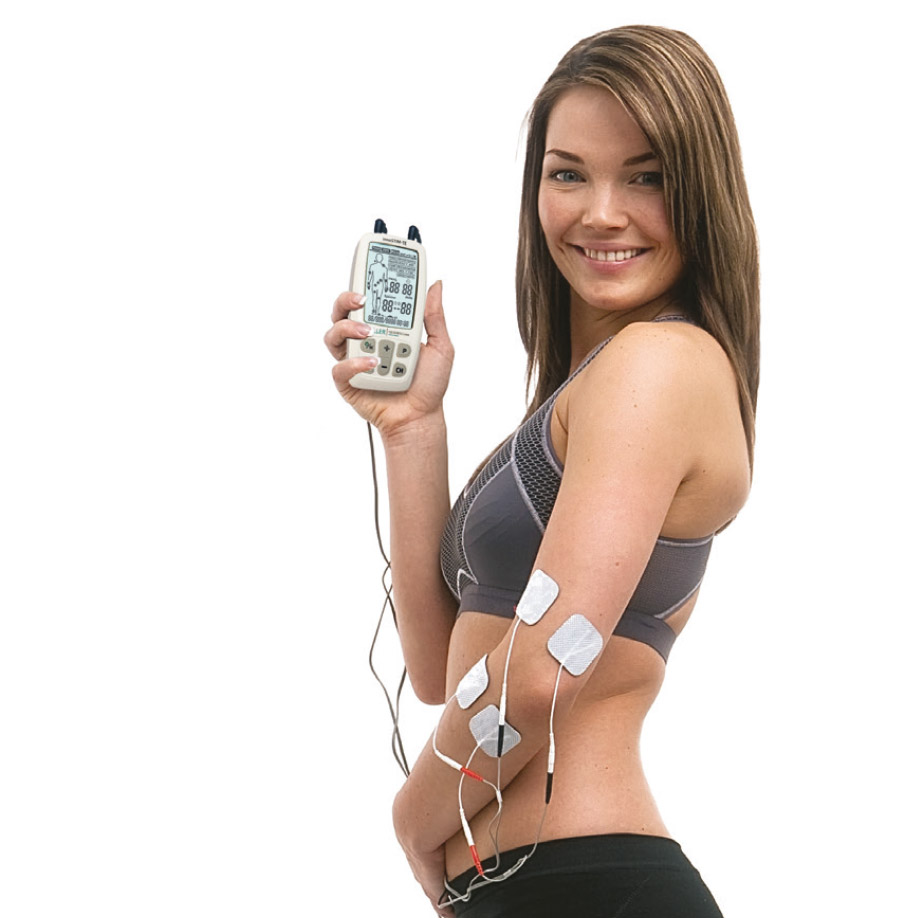EMS ist eine international anerkannte und geprüfte Behandlungsmethode von Muskelschmerzen und zur Auslösung von Muskelkontraktionen. Sie ist ein therapeutisches Verfahren, dem sich vor allem in der Rehabilitations- und Sportmedizin ein breites Behandlungsspektrum erschließt.
Die Muskelstimulation stellt eine effektive physikalische Therapie dar, die neben dem Erhalt und Aufbau von Muskeln, Sehnen- und Gelenksstrukturen einen sehr positiven Einfluss auf die Bewegungskoordination und die Versorgung der Haut, Unterhaut, Muskeln, Sehnen und Gelenke hat. Sie wird sinnvollerweise auch in Kombination mit anderen physikalischen und rehabilitativen Maßnahmen angewendet.
Wer seine Muskeln trainieren will, kann dies mithilfe eines Muskelstimulators tun. Dabei werden über Elektroden, die auf der Haut befestigt werden, an die gewünschten Muskeln elektrische Impulse abgegeben. Der so stimulierte Muskel beginnt bei ausreichender Stromintensität auch, ohne willentliche Anspannung zu arbeiten.
Je nach Dauer, Stärke und Häufigkeit der Stimulation gewinnt die Muskulatur an Form und Belastungsfähigkeit. Sehnen und Gelenke werden aufgrund besserer Durchblutung leistungsfähiger, Haut und Unterhaut straffer, Fett kann abgebaut werden. Insbesondere in Zeiten muskulärer Ruhigstellung durch Verletzungen, bei Krankheiten, Operationen oder Bewegungseinschränkungen infolge starker Schmerzen kann durch elektrische Muskelstimulation verhindert werden, dass der Muskel zu viel Kraft und Masse verliert.
EMS wird sinnvoll in wechselseitiger Ergänzung mit anderen Therapieverfahren gesehen (z.B. Krankengymnastik). Die niederfrequente Elektrostimulation leistet wesentliche Beiträge für eine komplexe physikalische Therapie.
Das EMS-Gerät sendet angenehme Impulse durch die Haut, die die Nerven an der zu behandelnden Stelle stimuliert. Wenn der Muskel diesen Impuls erhält, kontrahiert er so als ob dieser vom Gehirn aus gesteuert wäre. Da der Impuls sich verstärkt, bewegen sich die Muskeln wie bei einer körperlichen Anstrengung. Wenn der Impuls endet, lockern sich die Muskeln und der Zyklus beginnt von neuem (Stimulation, Kontraktion und Entspannung).

EMS (Elektrische Muskelstimulation) mit dem TENS-/EMS-Kombigerät innoSTIM-TE
HELLER MEDIZINTECHNIK GmbH & Co. KG ist seit über 25 Jahren als zertifiziertes Unternehmen in der Medizintechnik tätig und verfügt über langjährige Erfahrung in der Gestaltung von Lösungen im Bereich der elektrischen Nerven- und Muskelstimulation.
2025 © HELLER MEDIZINTECHNIK GmbH & Co. KG